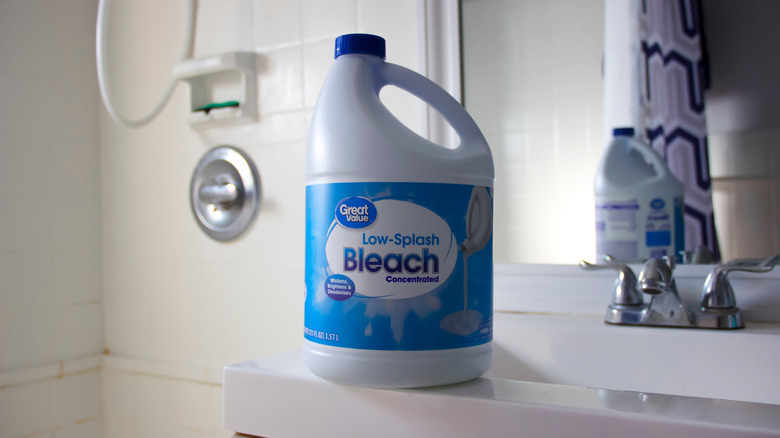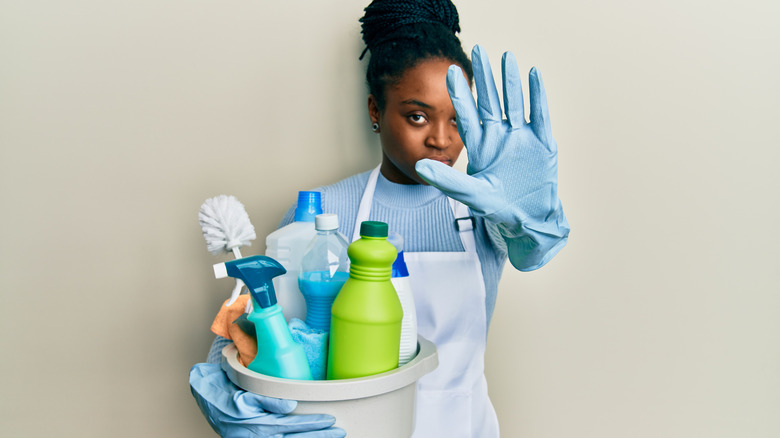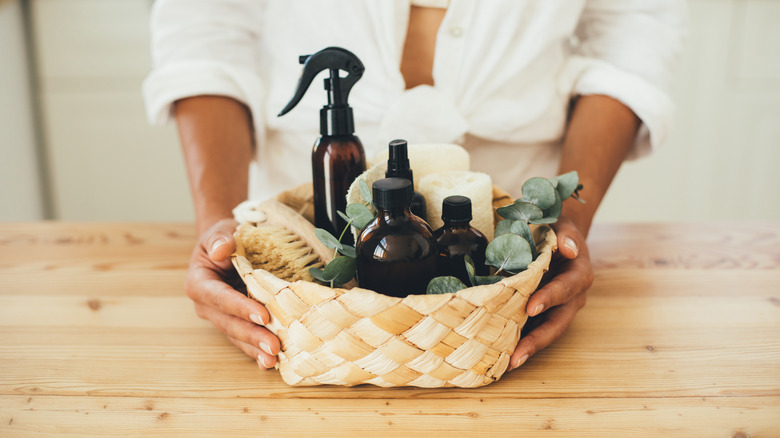Is Chlorine Bleach Bad For The Environment?
Whether you're doing laundry or scrubbing the bathroom, it's likely that your house cleaning routine includes chlorine bleach. Bleach has been included in household cleaning products for generations. Known as one of the most potent disinfectants, it's easy to understand its lasting popularity.
Although there is non-chlorine bleach, the chlorine variant is the original form of bleach and the kind most used in homes, per Coop Market. Made with sodium hypochlorite, chlorine bleach is used for whitening laundry, removing fabric stains, dissolving heavy grime, and disinfecting surfaces.
However, with more and more "green" products coming to supermarket shelves, you might have started to wonder about the environmental impact of your own cleaning supplies. Generally, green cleaning products forgo the harmful and toxic chemicals found in traditional cleaning agents to avoid environmental pollution and potential health hazards.
With this in mind, the question remains: Is chlorine bleach one of the household cleaning products that are bad for the environment?
Chlorine bleach is hazardous to the environment
Unfortunately, the truth is that chlorine bleach poses many dangers to both human health and the environment.
Chlorine bleach, when used for household cleaning, can enter the environment through wastewater, such as when you flush a newly-cleaned toilet. While there's contention about whether or not these trace amounts are enough to be considered dangerous, according to The Guardian, build-up over time can potentially cause air and water pollution that is hazardous to humans and wildlife.
Overwhelmingly, the environmental damage of chlorine bleach is caused by corporations. As mentioned by Croner-i, the environmental impact of chemical manufacturing, specifically the manufacturing of organochlorine products, is where the real sustainability concern is. Although some companies have turned to less harmful substances, bleach manufacturers have been criticized for using chlorine gas, an extremely hazardous chemical, in their production processes (via Greenpeace).
When chlorine bleach is used in other manufacturing operations, it often results in water and air pollution, per Sani Professional. Specifically, harmful bleach toxins can be released into the ozone during ventilation and exhaust processes, while some factories dispose of bleach and other waste into surrounding bodies of water.
There are many eco-friendly alternatives to chlorine bleach
Knowing the harm that chlorine bleach can cause to the environment, you may be wondering what product you should use in its place. Luckily, there are some common household items that you can use instead. For example, one bleach alternative for laundry is baking soda, which can be used to deodorize, soften, or whiten clothing. For disinfecting surfaces, you can try hydrogen peroxide or vinegar.
With the green cleaning product industry on the rise, according to Smart Chem, there are also many cleaning products that you can pick up at the store in place of bleach. Conversely, this also means that you'll need to be smart about the products you are choosing.
As mentioned by the EPA, some companies use vague marketing and general claims about environmentalism to try to appeal to the environmentally-conscious consumer. To combat this, you might use EPA's Safer Choice or DfE-Certified tools to help you research and identify genuinely green products.
Products with these sorts of certifications will often advertise them on their bottles, so it's a good idea to familiarize yourself with them. Some examples of certifications you might see are Certified B Corporation, Green Seal, and Environmental Working Group (EWG) Verified.


